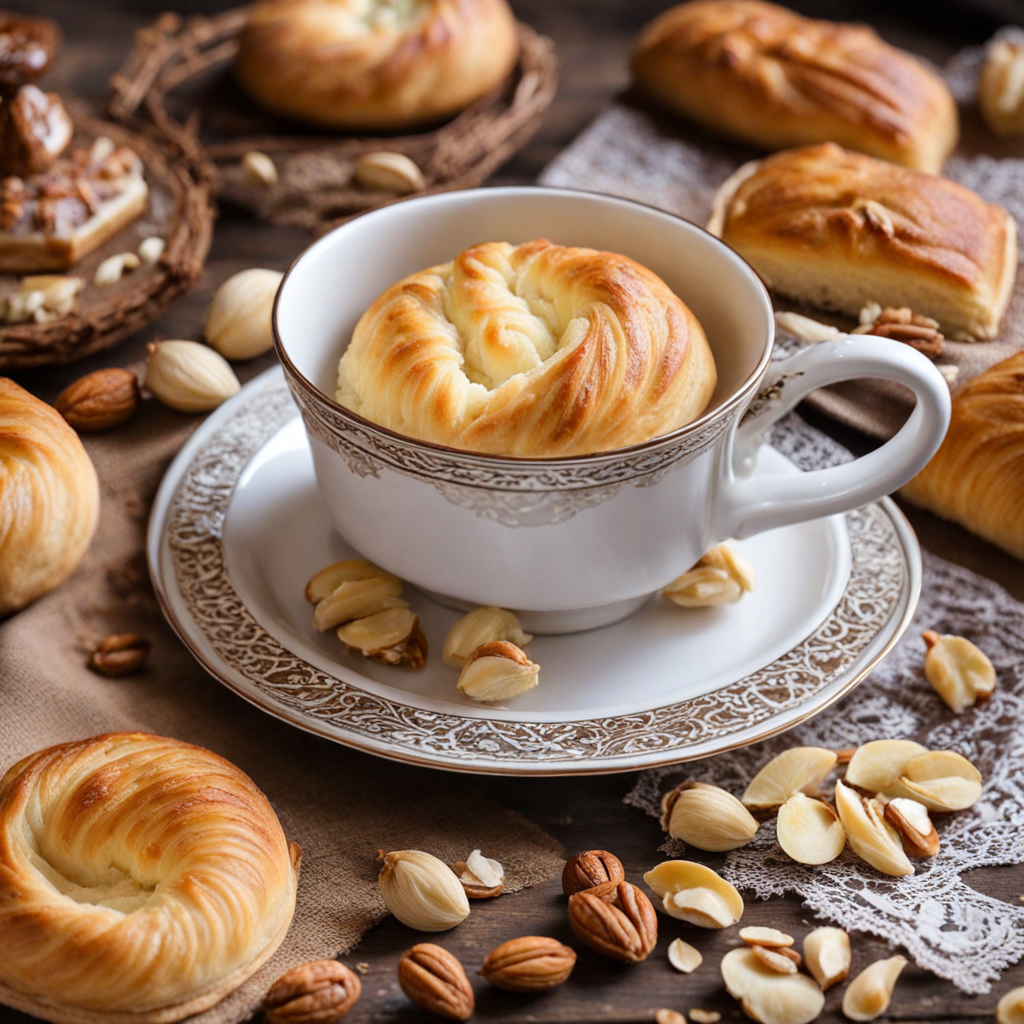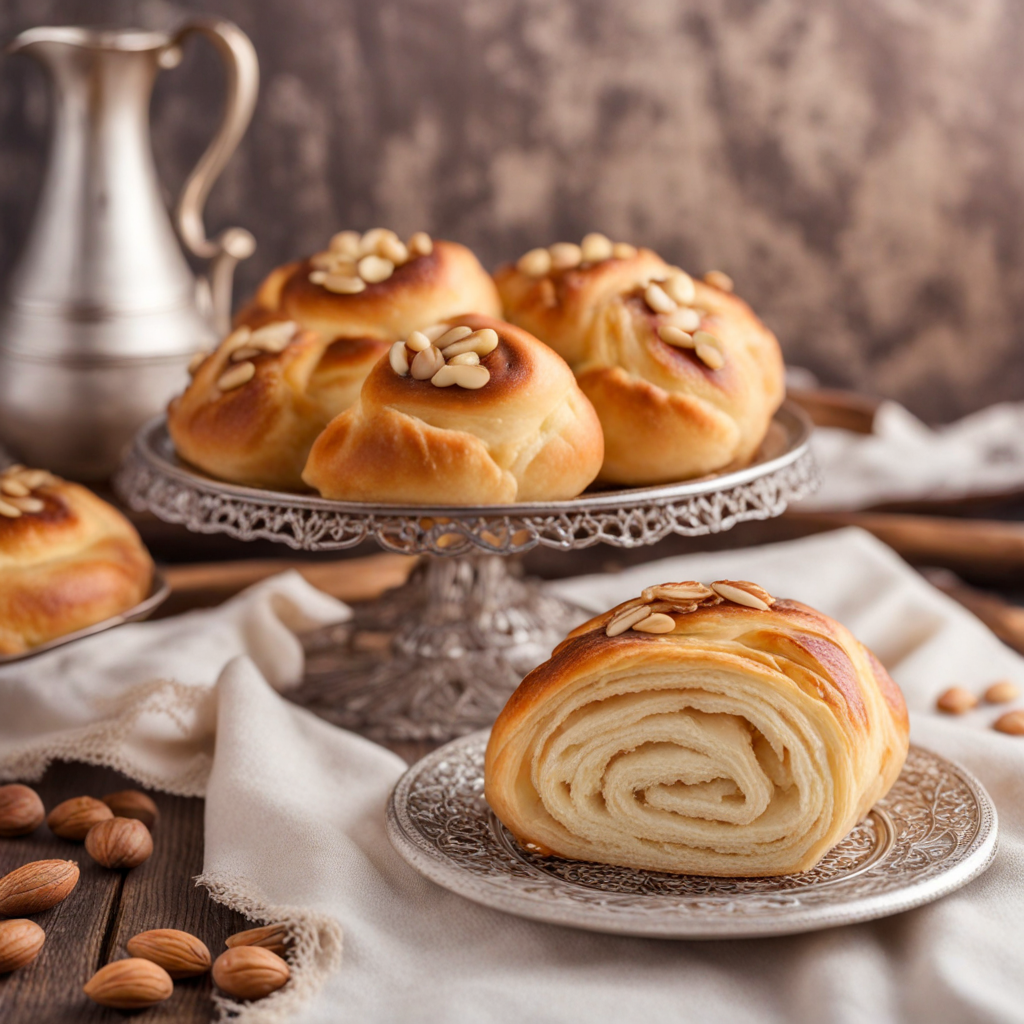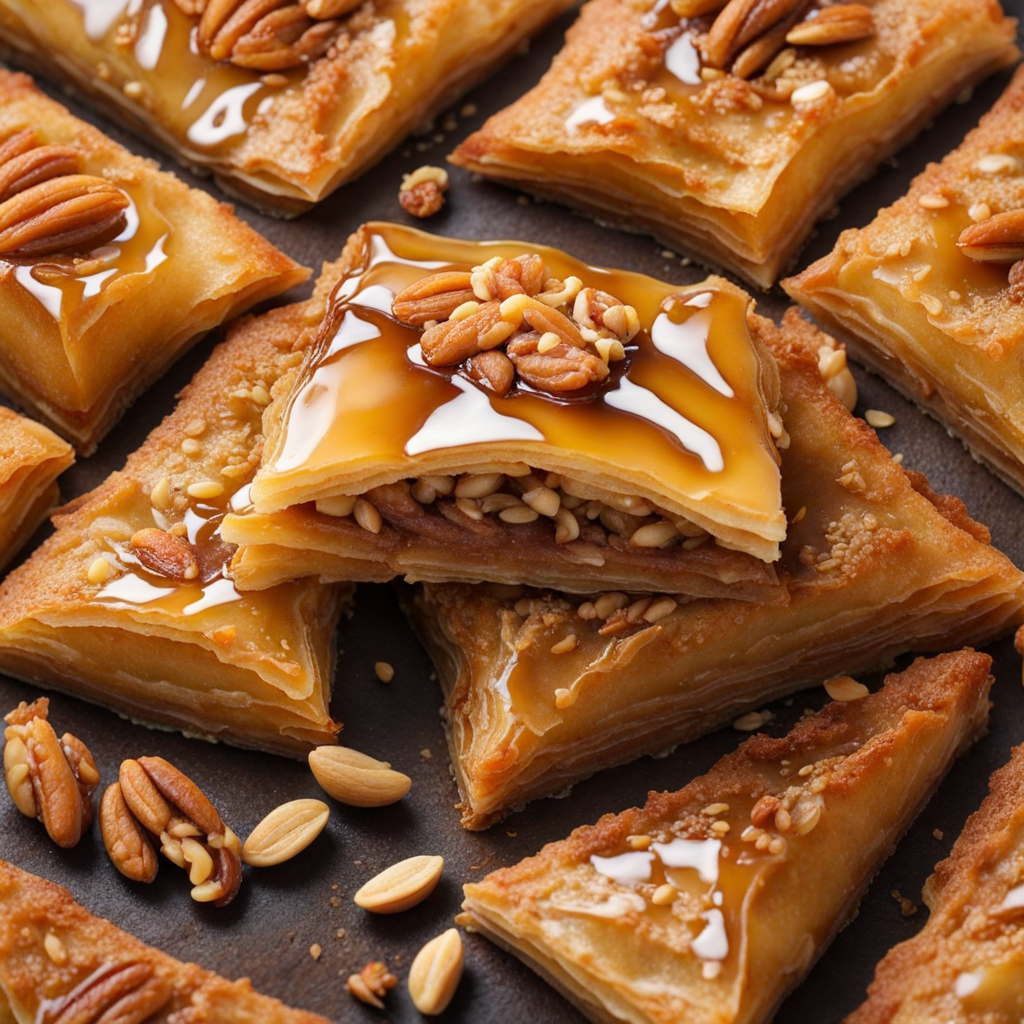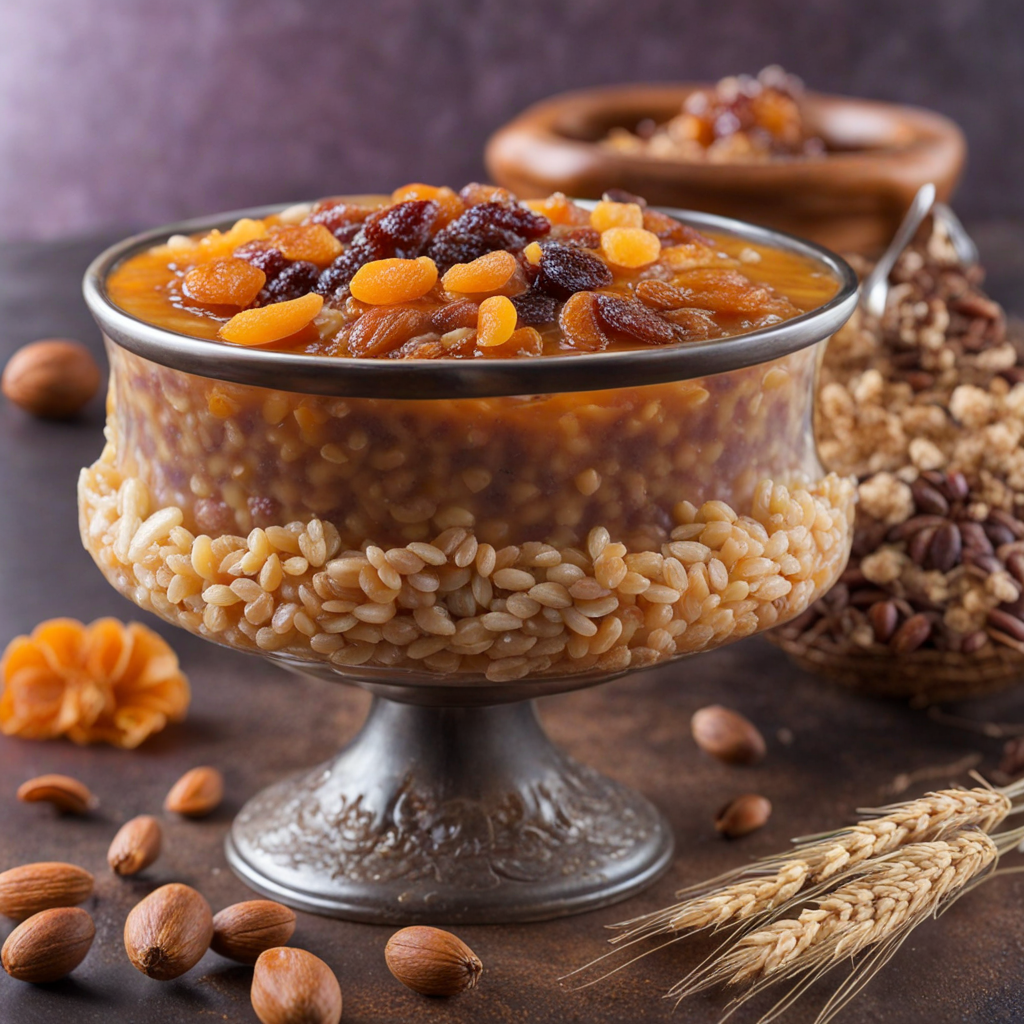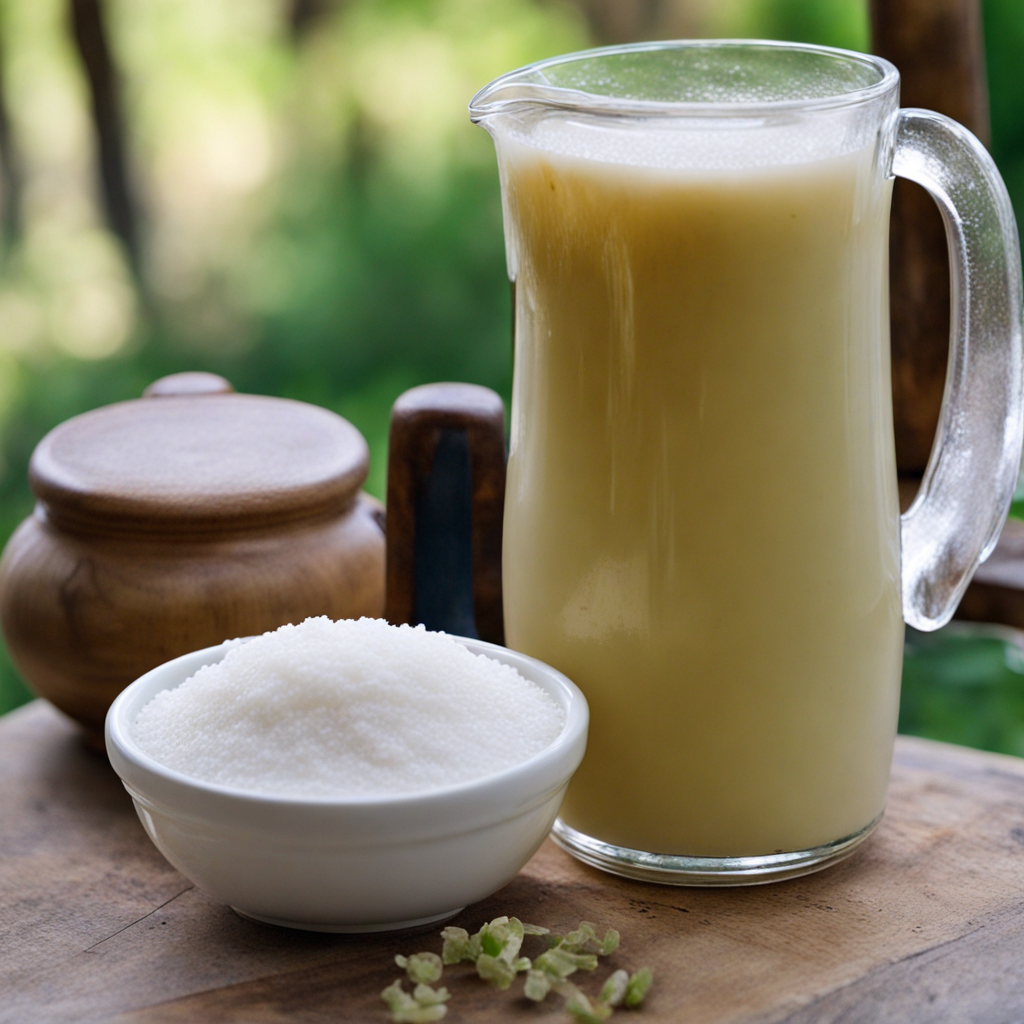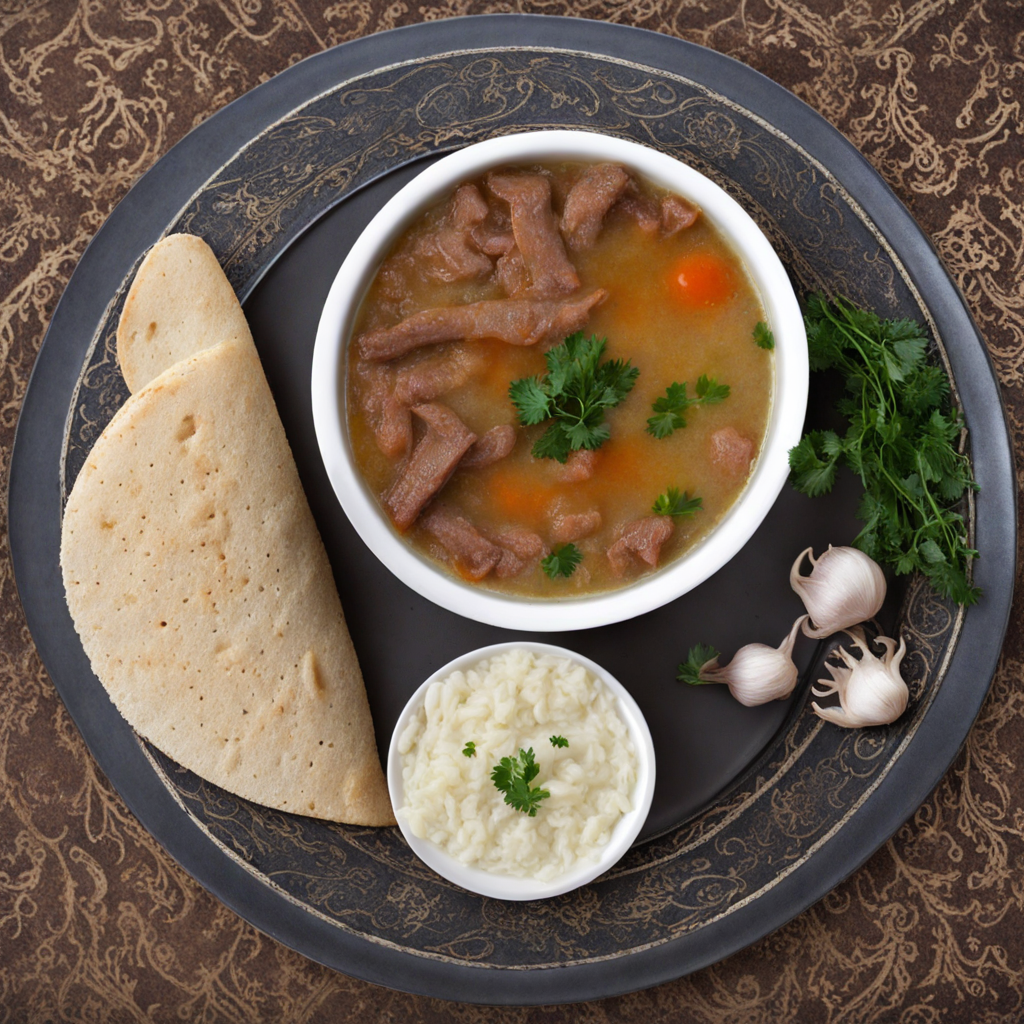Armenian Gata
Armenian Gata is a delightful pastry that embodies the rich culinary traditions of Armenia. This sweet bread-like treat is typically made with a buttery, flaky dough that envelops a sweet filling, often comprised of ground nuts, sugar, and vanilla. The dough is carefully rolled out to create multiple layers, giving it a light and airy texture that contrasts beautifully with the rich filling. The aroma of freshly baked gata wafts through the air, inviting you to discover the warm, comforting flavors tucked inside. The filling is where the magic happens, with variations that can include walnut, almond, or even a hint of cinnamon, each adding a unique twist to the overall flavor profile. Some versions may also incorporate dried fruits or honey, enhancing the sweetness and complexity of the gata. The combination of the crisp outer layer and the soft, slightly chewy filling creates a satisfying mouthfeel, making it an irresistible treat for those with a sweet tooth. Traditionally, gata is served during special occasions and celebrations, making it a cherished part of Armenian culture. As you take your first bite of Armenian Gata, you'll experience a delightful blend of flavors and textures that transport you straight to the heart of Armenia. It's a pastry that not only satisfies your cravings but also tells a story of heritage and tradition. Whether enjoyed with a cup of tea or as a dessert after a hearty meal, Armenian Gata is a must-try for anyone looking to explore new culinary experiences and indulge in a slice of Armenian culture.
How It Became This Dish
Origin of Gata Gata, a traditional Armenian pastry, has a rich history that stretches back centuries, deeply intertwined with the cultural and social fabric of Armenia. Its origins can be traced to ancient times when Armenians began to develop their culinary traditions, influenced by the region's diverse agricultural landscape and the grains that were cultivated. The word "gata" itself is derived from the Armenian term "gatan," which means "to knead," reflecting the pastry's preparation method. Historically, gata was not merely a food item; it was often prepared for special occasions and celebrations. The earliest references to gata date back to the medieval period, but it is believed that the recipe and its preparation have roots in even older traditions. The use of ingredients such as flour, sugar, butter, and nuts in its preparation suggests that gata was a dish created to signify prosperity and abundance, especially during festive times. \n Cultural Significance Gata holds a significant place in Armenian culture, representing hospitality and the warmth of familial ties. It is typically baked for important events such as weddings, christenings, and other religious ceremonies. In many Armenian households, the preparation of gata is a communal activity, bringing families together in the kitchen to share stories and laughter while kneading the dough and preparing the filling. Different regions of Armenia have their own variations of gata, with distinctive flavors and methods of preparation. For instance, in the Lori region, gata is often filled with a mixture of ground walnuts and sugar, while in the Ararat Valley, a more buttery and flaky version is common. These regional variations not only showcase the diversity of Armenian culinary practices but also highlight the importance of gata as a symbol of local identity and tradition. \n Development Over Time As Armenian society evolved, so did the recipes and techniques associated with gata. Traditionally, gata was prepared using simple, locally sourced ingredients, but over time, with the introduction of new culinary influences and the globalization of food culture, modern interpretations of gata have emerged. In the Soviet era, gata became more widely known beyond Armenia's borders, and it was often featured in bakeries throughout the former Soviet Union. This exposure led to the incorporation of different flavors and fillings, such as chocolate and various fruits, appealing to a broader audience. Despite these innovations, many Armenians continue to cherish and preserve the traditional recipes passed down through generations. \n Ingredients and Preparation The classic gata is characterized by its layered pastry dough, which is typically made from flour, butter, sugar, and baking powder. The dough is rolled out thinly and layered with a sweet filling, most commonly made from ground walnuts or almonds mixed with sugar and butter. The richness of the filling contrasts beautifully with the delicate layers of the pastry, creating a delightful texture and flavor profile. Preparation of gata is an art form in itself. The dough must be carefully kneaded to achieve the right consistency, and the filling should be evenly distributed to ensure that each piece has a perfect balance of sweetness and nuttiness. Once assembled, gata is often brushed with egg wash before baking, which gives it a beautiful golden color and a glossy finish. The aroma that fills the kitchen during baking is nothing short of heavenly, enticing family and friends to gather around as they await the final product. \n Gata in Modern Times In contemporary Armenia and among the Armenian diaspora, gata continues to be a beloved treat, enjoyed not only during special occasions but also as an everyday snack or dessert. Many bakeries and patisseries offer various interpretations of gata, catering to modern tastes while still honoring traditional recipes. The revival of interest in artisanal baking has also led to a resurgence of traditional gata-making techniques, with bakers seeking to replicate the authentic flavors of their ancestors. Furthermore, gata has found its way into the global culinary scene, with international food festivals and Armenian cultural events showcasing this delectable pastry. As a result, gata is increasingly recognized beyond Armenian borders, becoming a symbol of Armenian heritage and culinary artistry. \n Conclusion In summary, gata is more than just a pastry; it is a cultural emblem representing the history, traditions, and resilience of the Armenian people. From its ancient origins to its modern interpretations, gata continues to be a cherished part of Armenian identity, creating connections between generations and communities. Whether enjoyed during a family gathering, a festive celebration, or simply as a sweet treat with coffee, gata remains an enduring symbol of hospitality and love. As it adapts and evolves, it will undoubtedly continue to hold a special place in the hearts and homes of Armenians worldwide.
You may like
Discover local flavors from Armenia


